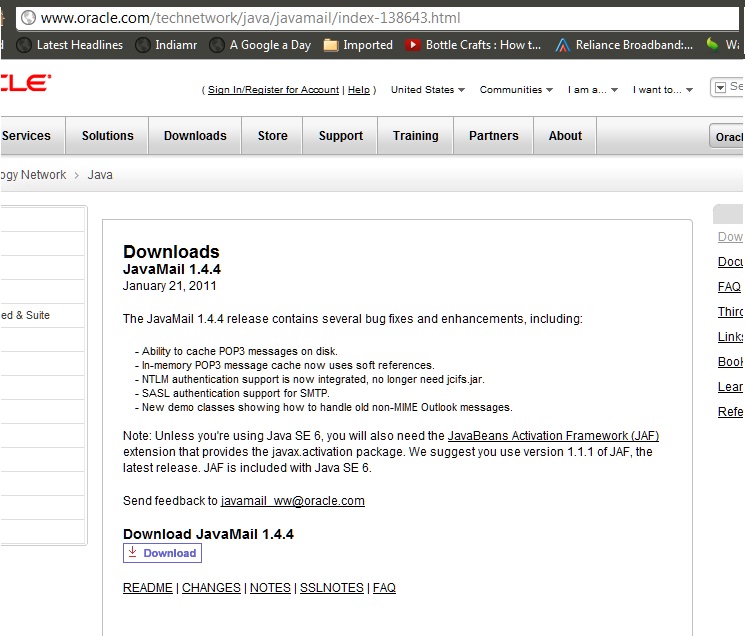Mail.jar And Activation.jar
Download activation.jar: activation « a « Jar File Download • • • • Download activation.jar The download jar file contains the following class files or Java source files.
You are a Java developer and would like to integrate e-mail functionality into your application, but you haven’t written anything related to e-mail stuff before. So here is a good place for getting started with e-mail programming in Java. Like any other Java technologies, we need to pick up a library and understand its API before writing and testing some real code. Qt 5.1.0 For Windows 32-bit (mingw 4.8) Offline Installer more. Although the JRE/JDK does not include a built-in API for e-mail, Oracle provides an optional package called JavaMail which is probably the most popular framework for e-mail programming with Java technology.
Previous Releases Recent releases can be found in the java.net Maven repository. Very old releases are listed below: JavaMail 1.4.5. JavaMail API 1.4.5, you can find.

The JavaMail is also a part of JavaEE’s technology stack. Official resources for JavaMail Here are some official resources provided by Oracle for its JavaMail technology: -. To begin, download the latest distribution of JavaMail (which is JavaMail 1.4.5 at the time of writing this article). A JavaMail distribution comes with the following items: - License and copyright notices. - Release changes. - API documentation. - Demo Java source code.
- Jar files for protocol-dependent implementation: imap.jar, pop3.jar, smtp.jar - Binary of the JavaMail API included in mail.jar file. This jar file is a combination of all jar files above. So to use JavaMail, only the mail.jar file is required. Using JavaMail library To compile and run code that is using JavaMail, add the mail.jar file to compile classpath and runtime classpath. If you are using Java 5 or earlier, you have to download the and add activation.jar file to the classpath. The JAF is only included in JDK since Java 6. Understanding of e-mail protocols: SMTP, IMAP and POP3 Because JavaMail is based on standard e-mail protocols like SMTP, IMAP, and POP3, it’s recommended to have basic understanding of how these protocols work, as well as advantages and disadvantages of each protocol. The Wolfman 1941 Rapidshare on this page.
That would help you implement your code more efficiently. Here are the links for these protocols on Wikipedia: -. Oxmetrics Software more. And finally, once you have grasped the stuff above, follow our series of tutorial on JavaMail technology: • • • • • • • • •.